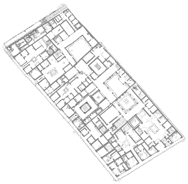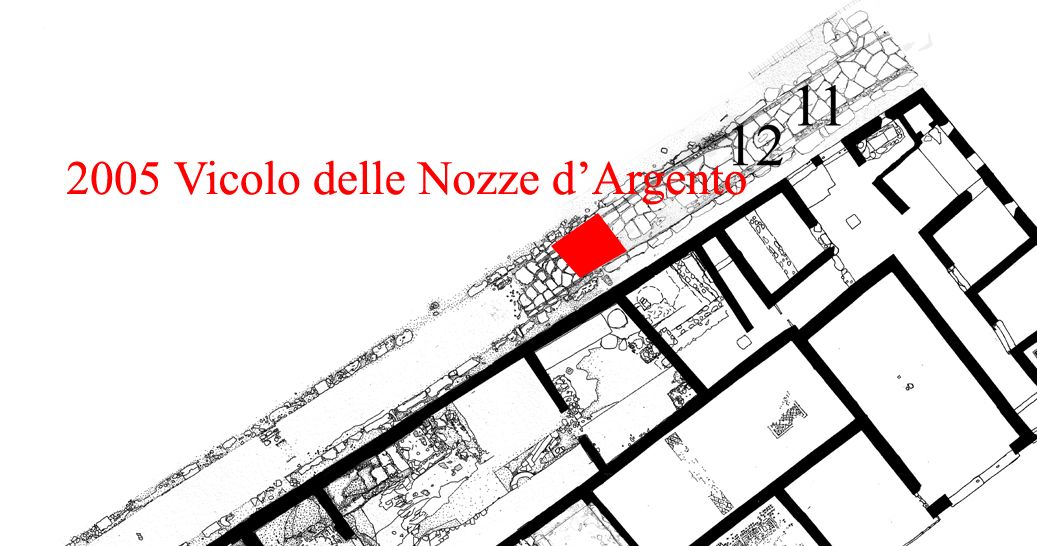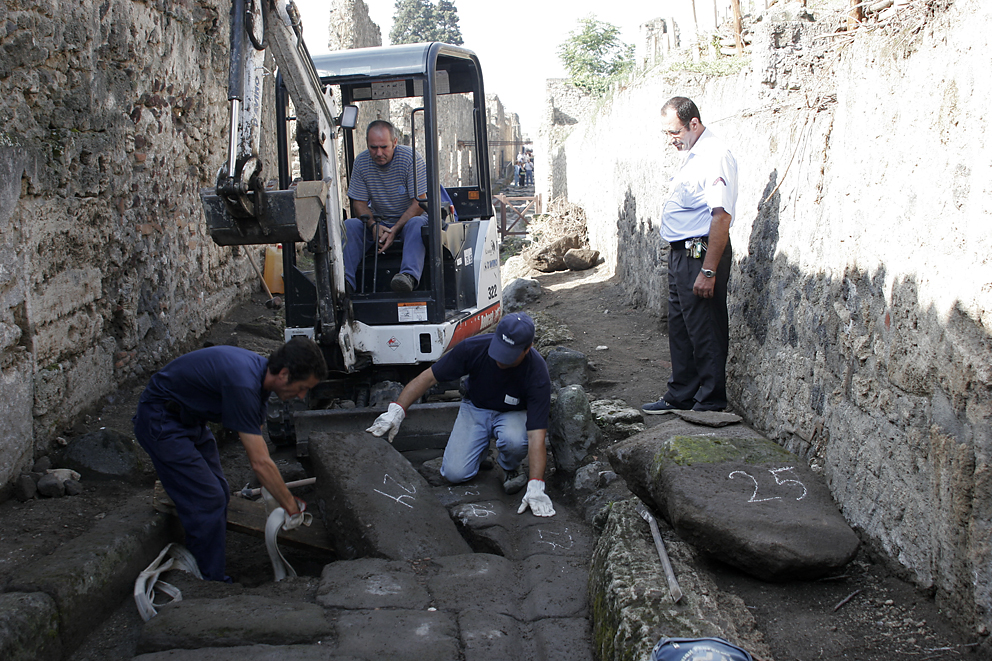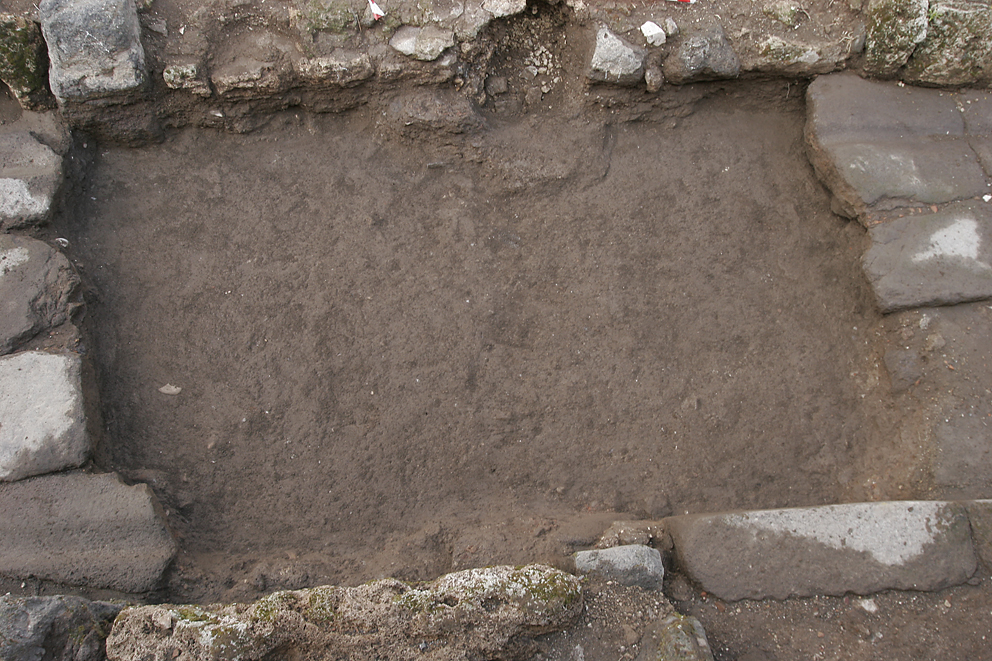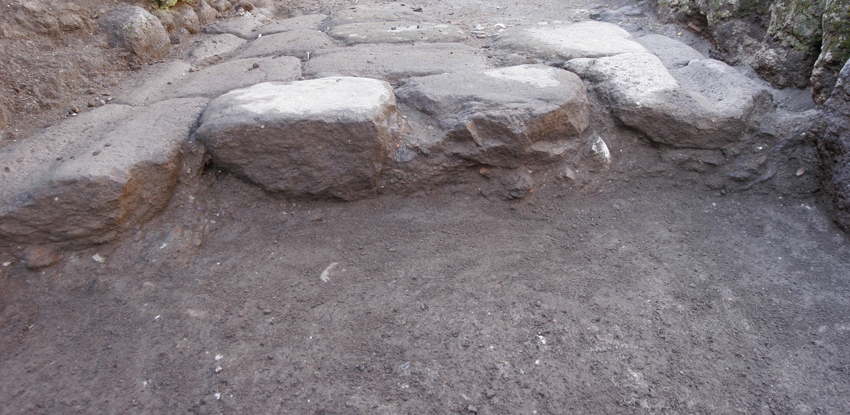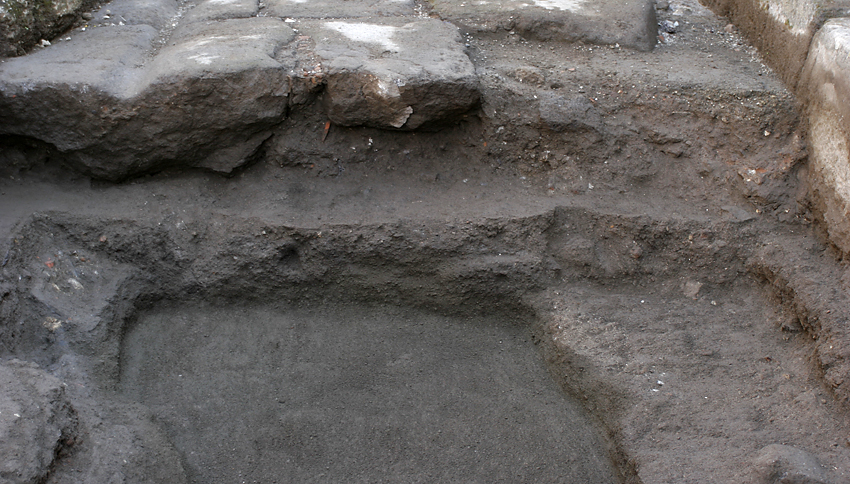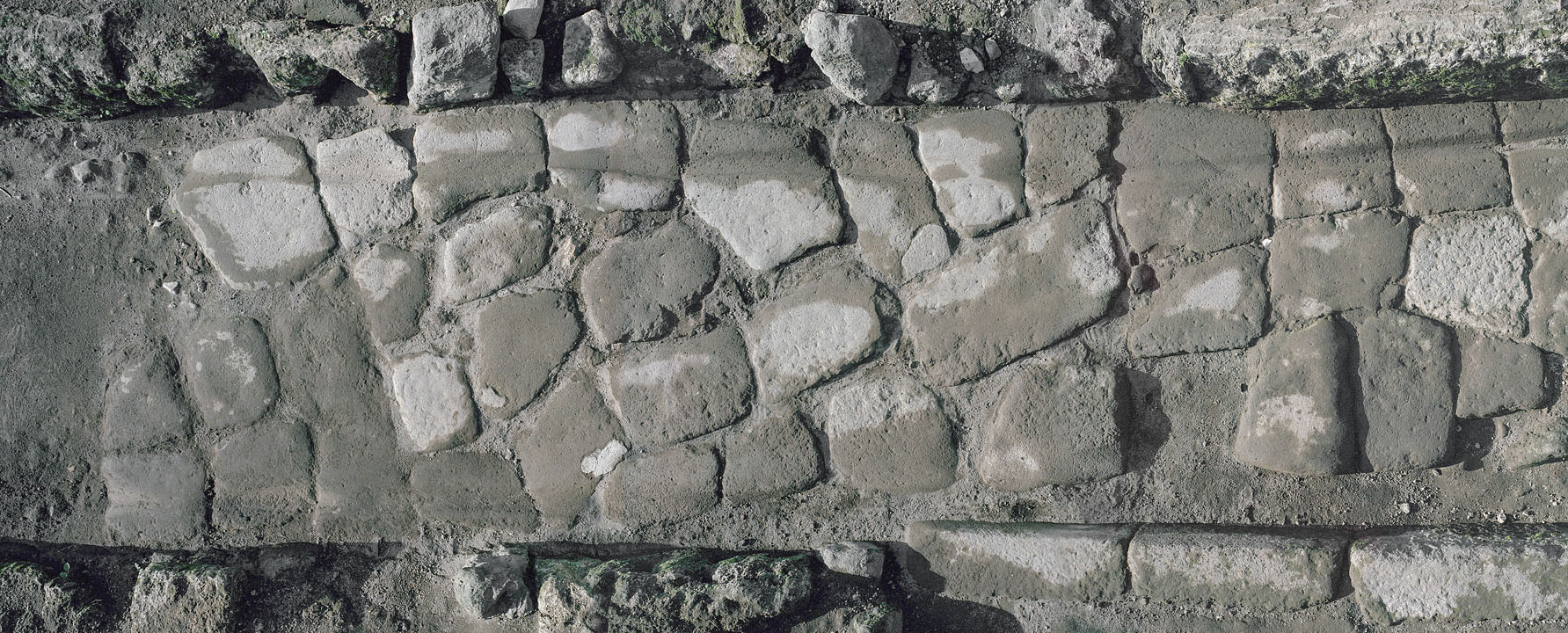Street - Vicolo delle Nozze d'Argento
Description
Henrik Boman & Monica Nilsson
Vicolo delle Nozze d’Argento
The stone paved street in use in AD 79
The eastern part of the street that frames the northern boundary of Insula V 1 is paved with large basalt stones, whereas the western part appears to have been covered simply with crushed waste materials. The stones have deep wear marks from cart wheels along the northern side of the street. On most of the southern side, however, the paving does not meet up with the sidewalk and the cart wheels have run along the gap.
Outside the kitchen entrance (V 1,11-12) of Casa degli Epigrammi greci, a stepping stone has been placed to facilitate pedestrian crossing of the street.
Part of the street was excavated, showing that the paving rested on a 0.40m thick bedding of sterile, weathered volcanic soil. Sharp fragments of basalt just below the paving indicate that the stones were dressed on site to fit in snugly.
While investigating the joints and then removing the paving stones, few finds were encountered. Oxidized iron nails, probably originating from the carts, were the most common finds.
Two cesspits were also encountered, one filled with ancient waste, the other with pumice from the AD 79 eruption. The paved area above the first cesspit had been disarranged at some point in antiquity: two stones were standing on edge and a couple of stones seem to be missing. This would suggest that the cesspit had been, or was about to be, emptied and the street was never restored to its former condition. The cesspits could not be excavated since they are located underneath the pavements and walls in the vicinity.
Earlier street
The older street level was not paved with stones and in between the wheel-ruts nothing but sterile soil was encountered, meaning that the ground level of this phase must have been evened out for the paving and bedding of the new street. The wheel-ruts, however, consisted of a mix of consolidated soil, sand, mortar, small pieces of lava-stone and pottery. Heavy cart traffic probably necessitated the occasional refilling of the ruts for the traffic to run smoothly. This filling is at its deepest 0.24m thick. The wheel-ruts also contained a few small finds: four nondescript bronze coins, part of a bone pin, plaster fragments dating to the First Style period (identification by C. Pettersson), and, again, the oxidized remains of iron nails.
Under the earlier street level, the soil was completely lacking in man-made finds down to a depth of c. 0.70-0.75m, at the point where the Early Bronze Age layers were encountered.
See under the heading ’Excavations’ for more detailed information on the street excavation.

